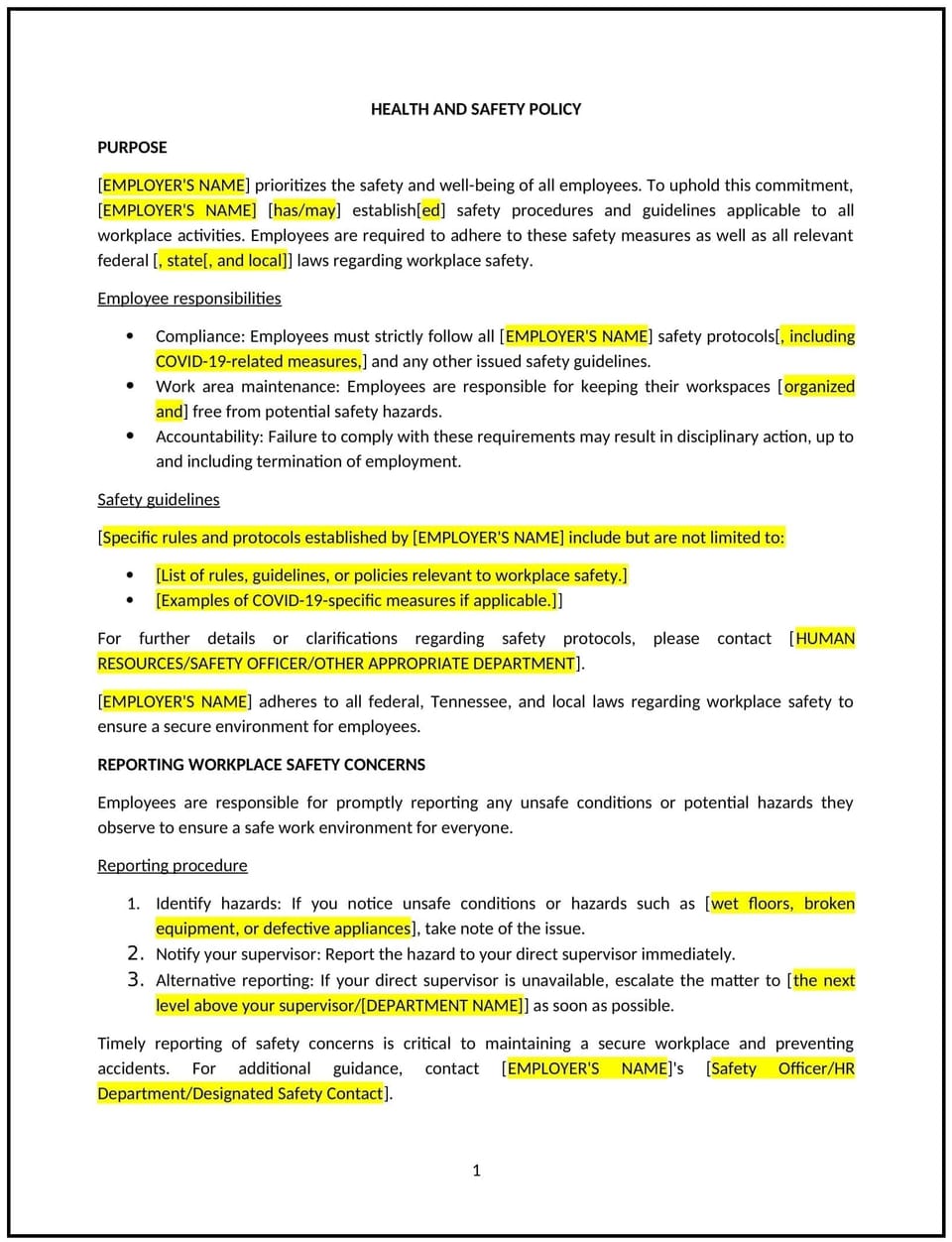Health and safety policy (Tennessee): Free template

Health and safety policy (Tennessee)
This health and safety policy is designed to help Tennessee businesses establish guidelines for maintaining a safe and healthy work environment. It outlines procedures for identifying hazards, preventing accidents, and responding to emergencies.
By adopting this policy, businesses can protect employees, reduce workplace injuries, and align with Occupational Safety and Health Administration (OSHA) standards.
How to use this health and safety policy (Tennessee)
- Define safety responsibilities: Specify the roles of employees, managers, and safety officers in maintaining workplace safety.
- Set hazard identification procedures: Outline steps for identifying and addressing potential hazards, such as regular inspections.
- Address emergency preparedness: Provide guidelines for responding to emergencies, such as fires, medical incidents, or natural disasters.
- Train employees: Educate staff on safety protocols, emergency procedures, and proper use of equipment.
- Review and update: Assess the policy annually to ensure it aligns with evolving business needs and safety standards.
Benefits of using this health and safety policy (Tennessee)
This policy offers several advantages for Tennessee businesses:
- Protects employees: Ensures a safe and healthy work environment for all staff.
- Reduces workplace injuries: Minimizes the risk of accidents through proactive hazard prevention.
- Enhances productivity: Reduces downtime caused by workplace incidents.
- Builds trust: Demonstrates a commitment to employee well-being and safety.
- Aligns with OSHA standards: Supports compliance with federal and state safety regulations.
Tips for using this health and safety policy (Tennessee)
- Communicate the policy: Share the policy with employees and include it in the employee handbook.
- Provide training: Educate staff on safety protocols, emergency procedures, and proper use of equipment.
- Monitor compliance: Regularly review workplace safety practices and incident reports.
- Address issues promptly: Take corrective action if hazards or safety violations are identified.
- Update regularly: Assess the policy annually to ensure it aligns with evolving business needs.
Q: How does this policy benefit businesses?
A: It protects employees, reduces workplace injuries, and enhances productivity.
Q: What should businesses do if a workplace injury occurs?
A: Provide immediate medical attention, document the incident, and investigate the cause to prevent future occurrences.
Q: How often should businesses conduct safety inspections?
A: Regularly, with frequency depending on the workplace environment and industry standards.
Q: Can businesses face penalties for safety violations?
A: Yes, businesses may face fines or penalties for failing to comply with OSHA standards.
Q: How often should businesses review this policy?
A: Businesses should review the policy annually or as needed to address changing safety standards and business needs.
This article contains general legal information and does not contain legal advice. Cobrief is not a law firm or a substitute for an attorney or law firm. The law is complex and changes often. For legal advice, please ask a lawyer.


